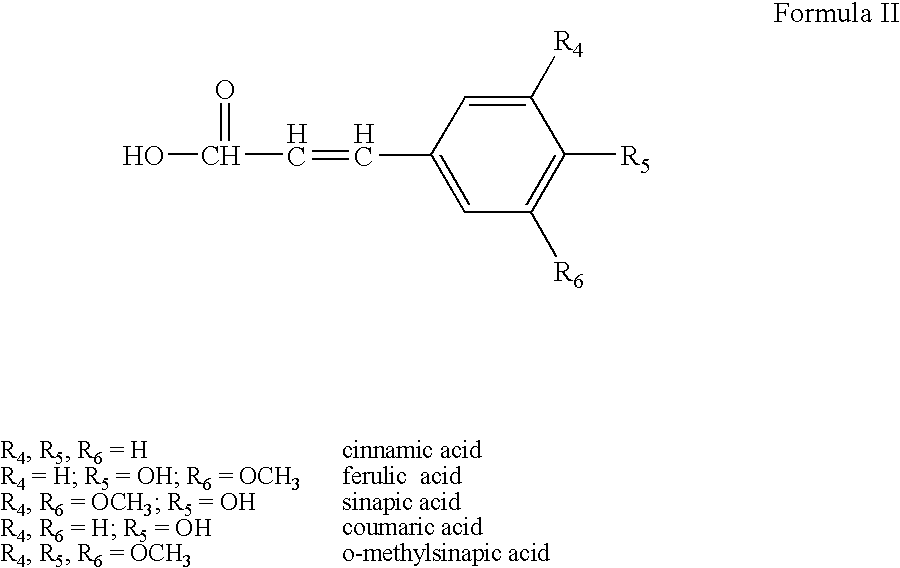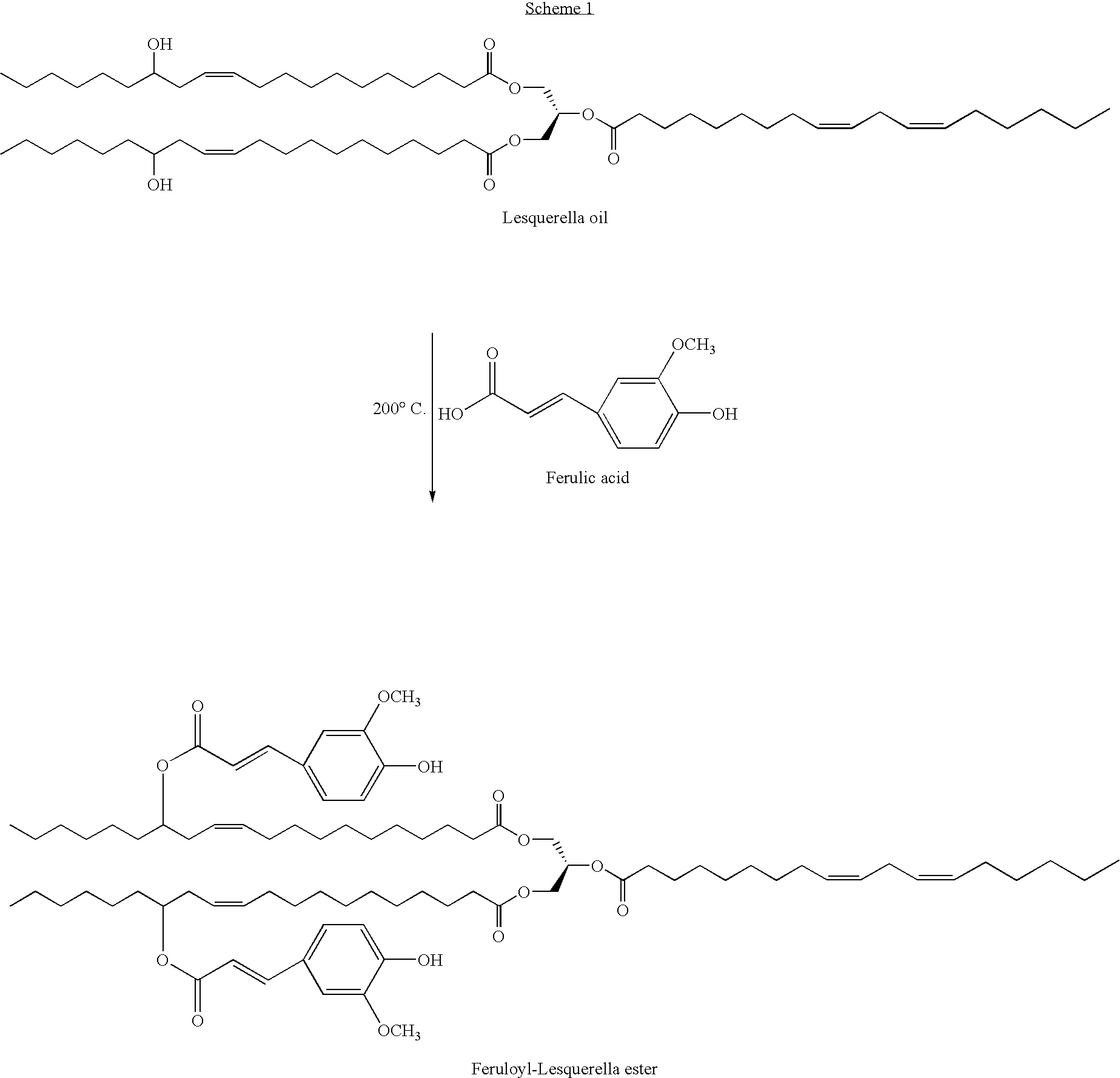Sunscreen reagents from hydroxy-substituted acylglycerides
a technology of acylglyceride and sunscreen, which is applied in the direction of liposomal delivery, pharmaceutical delivery mechanism, organic chemistry, etc., can solve the problems of cosmetically unacceptable to the consumer, limited range of maximum ultraviolet light, and noticeable residues
- Summary
- Abstract
- Description
- Claims
- Application Information
AI Technical Summary
Benefits of technology
Problems solved by technology
Method used
Image
Examples
example 1
Synthesis of Cinnamoyl-Lesquerella Esters
[0032]Pressed, refined, and degassed lesquerella oil (1.0 mL, 1.0 mM), cinnamic acid (288 mg, 2 mM), and activated 3 Å molecular sieves (220.0 mg) were placed in a 5 mL glass ampule (Kimble Glass, Inc., Vineland, N.J.) under a nitrogen atmosphere. The ampule was sealed under a stream of nitrogen using a two-gas micro-torch (5000° F., Microflame Inc., Minnetonka, Minn.). The ampule was buried in a sand bath that was heated via a heating mantel and temperature controlled using a Variac controller. The ampule was removed and the contents periodically agitated to ensure a homogeneous reaction mixture. After 24 hours the ampule was allowed to cool to ambient temperature, the seal broken, and the contents extracted with three 1 mL portions of hexane. The combined extracts were filtered though a bed of Celite, the bed was then rinsed with three portions of 1 mL of hexane, and the washings combined with the filtrate. The solvent was removed from the ...
PUM
| Property | Measurement | Unit |
|---|---|---|
| temperatures | aaaaa | aaaaa |
| wavelength | aaaaa | aaaaa |
| wavelength | aaaaa | aaaaa |
Abstract
Description
Claims
Application Information
 Login to View More
Login to View More - R&D
- Intellectual Property
- Life Sciences
- Materials
- Tech Scout
- Unparalleled Data Quality
- Higher Quality Content
- 60% Fewer Hallucinations
Browse by: Latest US Patents, China's latest patents, Technical Efficacy Thesaurus, Application Domain, Technology Topic, Popular Technical Reports.
© 2025 PatSnap. All rights reserved.Legal|Privacy policy|Modern Slavery Act Transparency Statement|Sitemap|About US| Contact US: help@patsnap.com



